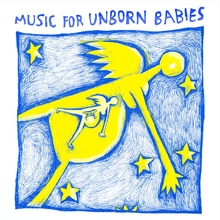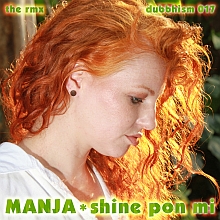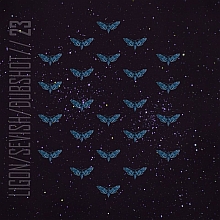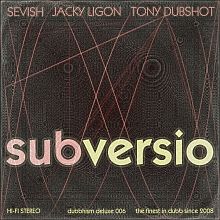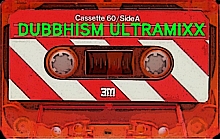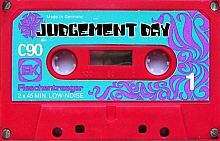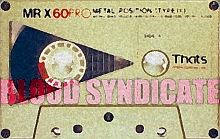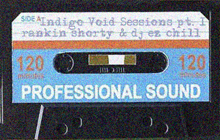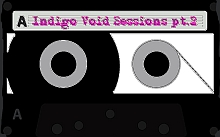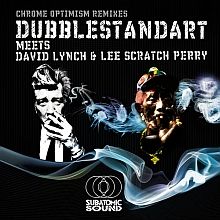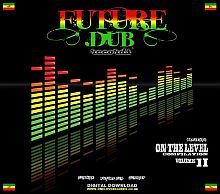
Ring modulation is an audio effect that's used mostly by experrymental musicians and producers. There are many different models and sounds, so how do you choose the ring modulator that's right for you?
Here's is a quick test of two high quality analog ring modulators, comparing them to each other and also to some digital cousins, and even to an ancient analog design. Maybe it will help you find out which type of ring modulation suits your production style best.
In this shootout the sounds of the Moogerfooger MF-102 and the Vermona RM1 are compared to the sound of a vst plugin called the Ringer, to an average quality digital hardware ring modulator (the Alesis Bitrman) and to the sound of a classic analog circuit (CGS real ring modulator: lattice-type ring of four diodes). Finally the versatility, usability, etc. of the Moogerfooger and the Vermona RM1 are compared.
Technical note: mid price analog ring modulators (like for example the Doepfer A-114) are often built around so-called 4-quadrant multiplication ic's. These effects are not in this test for the simple reason that i've sold them all. They sound a bit sterile, flat and harsh compared to high quality analog designs like the Moogerfooger.
On the positive side a common 4-quadrant multiplication ring modulator is cheaper and it's definitely usable for basic sound warping and mangling, but if you want classy, warm ring modulation, especially at the end of a signal chain, it isn't really an option.
The sound of ring modulation
Ring modulation is not as popular as distortion, filtering or delay. While most effects alter the spectral/harmonic balance of a sound, ring modulation can really destroy it's fundamental harmonic properties, sounding a bit like a harmonizer that's out of order.
 Ring modulation does have a tendency to sound metallic but don't think that's the only thing you can do with it. If you take a harmonic sound like a piano and ring modulate it the result can be anything from tremolo to metallic dissonance to distortion and weirdness. And if you are the scientific type you should definitely experryment with input/carrier combinations that have simple numerical relations. This way you can generate very interesting harmonics/spectrums.
Ring modulation does have a tendency to sound metallic but don't think that's the only thing you can do with it. If you take a harmonic sound like a piano and ring modulate it the result can be anything from tremolo to metallic dissonance to distortion and weirdness. And if you are the scientific type you should definitely experryment with input/carrier combinations that have simple numerical relations. This way you can generate very interesting harmonics/spectrums. To hear what ring modulation sounds like take
- a big sine sweep.mp3 going from 0.1 Hz to 20.000 Hz
- 1 minute of drumloop dry.mp3
- 1 minute of song dry.mp3
DON'T PLAY THE SINE SWEEP TOO LOUD! THE INAUDIBLE PART CAN KILL YOUR SPEAKERS
Ok, now we let the ring modulators mix up these sounds.
drumloop sweep mf-102.mp3
drumloop sweep rm1.mp3
drumloop sweep real ring.mp3
drumloop sweep ringer.mp3
song sweep mf-102.mp3
song sweep rm1.mp3
song sweep real ring.mp3
song sweep ringer.mp3
ALL SINE SWEEP EXAMPLES START WITH A FEW SECONDS OF SILENCE (ULTRA LOW CARRIER FREQUENCY)
If you listen casually these ring modulators may all sound more or less the same to you but if you load these sounds in a multitrack recorder and really compare them the differences are huge. These examples are 'matched' for easy a/b comparing and this makes it possible to hear the character of each design.
The digital sounds coming from the Ringer plugin are a bit harsh but not thin, relatively clean but not without character, although they lack the funky crunchy vibes of the Moogerfooger.
 Still the digital sound is very usable. I'd even say that for a free plugin the Ringer sounds very good, almost as good as the analog RM1, but keep in mind that the external modulation trick (the use of the specially prepared sine sweep) isn't exactly 'intuitive' or user friendly (stereo files only, R ~> L ). The Ringer seems to be the only free vst plugin that actually accepts external carrier signals but i could be wrong about this.
Still the digital sound is very usable. I'd even say that for a free plugin the Ringer sounds very good, almost as good as the analog RM1, but keep in mind that the external modulation trick (the use of the specially prepared sine sweep) isn't exactly 'intuitive' or user friendly (stereo files only, R ~> L ). The Ringer seems to be the only free vst plugin that actually accepts external carrier signals but i could be wrong about this. Comparing the analog hardware, the Moogerfooger generally sounds a bit warmer and the Vermona RM1 a bit cleaner but besides that the Moogerfooger has a really unique sound of it's own, almost as if there's a bit of extra sound mixed in, like extra harmonics or something like that.

 The CGS real ringmodulator is actually a passive building block for people who like to solder their own equipment. Technically this is the back to basics original design of a ring modulator. As you may have expected it has plenty of analog character but it has absolutely no bottom (doesn't have to be a problem).
The CGS real ringmodulator is actually a passive building block for people who like to solder their own equipment. Technically this is the back to basics original design of a ring modulator. As you may have expected it has plenty of analog character but it has absolutely no bottom (doesn't have to be a problem). I'd say the sound of the CGS is halfway in between the (upper region of the) sound of the MF-102 and the RM1. If you know a bit about soldering and the technical side of effects you should definitely get one! It's cheap and it fits into any analog setup. Here are more examples of a CGS Real Ring Modulator fitted in an eurorack, compared to a Doepfer A-114.
Jammin
 Sound quality is very important but versatility and ease of use are just as important. For the second part of the test we say goodbye to the CGS real ring modulator (no other features except its sound) and to the Ringer plugin (it's impossible to jam with it). The Ringer is swapped for a nice piece of digital hardware: the Alesis Bitrman.
Sound quality is very important but versatility and ease of use are just as important. For the second part of the test we say goodbye to the CGS real ring modulator (no other features except its sound) and to the Ringer plugin (it's impossible to jam with it). The Ringer is swapped for a nice piece of digital hardware: the Alesis Bitrman. Although this little unit has very limited options for the ring modulation section (no lfo, no external carrier signal input) it does have a compressor, a distortion and a stereo phaser that can be switched (with an audible click unfortunately) before or after the ring modulation in six different ways. This is comparable to the 'drive' function on both the Moogerfooger and the Vermona, and the stereo phaser can do a decent wobble. (The Alesis Bitrman has five other fx including freq shift, comb filter and bit reduction.)
 The MF-102 and the RM1 are both very versatile. The Moogerfooger has on board lfo (sine and square) but the Vermona even adds a rising and a falling sawtooth. What makes the Vermona really special compared to the Moogerfooger are the extremely usable envelope follower and the ability to mix lfo, envelope follower and external cv. There's also the choice between positive and negative modulation and finally the RM1 offers a (continuous) choice between a sine wave and a triangle wave for the carrier (triangle sounds dirtier). If you want features and tweakability the RM1 is clearly the winner.
The MF-102 and the RM1 are both very versatile. The Moogerfooger has on board lfo (sine and square) but the Vermona even adds a rising and a falling sawtooth. What makes the Vermona really special compared to the Moogerfooger are the extremely usable envelope follower and the ability to mix lfo, envelope follower and external cv. There's also the choice between positive and negative modulation and finally the RM1 offers a (continuous) choice between a sine wave and a triangle wave for the carrier (triangle sounds dirtier). If you want features and tweakability the RM1 is clearly the winner.Here are some examples of the sounds you can get from these machines using the knobs:
song jam mf-102.mp3
song jam rm1.mp3
song jam bitrman.mp3
drumloop jam mf-102.mp3
drumloop jam rm1.mp3
drumloop jam bitrman.mp3
Conclusion: all ring modulators in this test have their qualities. If you want warm fuzzy ring modulation get the Moogerfooger. If you want extreme fx and tweakability get the RM1. If you want a classic analog sound for a small price (and you have some technical knowledge) you should get the CGS Real Ring Modulator.
More shootout action on this blog
- Boss RE-20 Twin Pedal vs Roland RE-201 Space Echo
- 8 Doepfer filters (and an Arp 4075) compared
Related stuff
- Ken Stone's Real Ring Modem and the Active Real Ring Modulator
- DIY eurorack CGS Real Ring Modulator vs. the Doepfer A-114
- Another test of the RM1 and the MF-102 in German
PS: the RM1 is not on the official Vermona website anymore. I have no idea what this means for availability.


